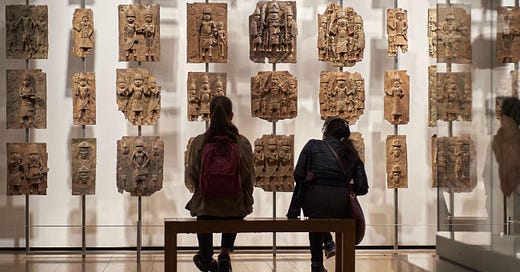The 'British' Museum
As a second-year history student, museums have played a key role in making me want to study the subject at university. As much as I love to visit them, it is also essential to recognise their problematic past.
Recently, the British Museum announced that they are running out of storage for newly discovered British archaeological objects. These artefacts date back to the Bronze Age and the Roman period, making them vital in understanding pre-modern British history. The government has refused calls for the construction of a national archive to store these objects. This begs the question- what will happen to these artefacts?
The British Museum was opened in 1753 as the first national and public museum, meaning that entry was, and still is, free. It has been ranked as the third most visited art museum in the world, carrying approximately 8 million artefacts in storage.
Most of these were looted items during the colonisation period of the British Empire. The empire, at its peak in the 1920s, controlled 24% of the world’s population. The empire was notorious for its pillaging; its legacy remains in the British Museum. The museum carries many culturally significant artefacts, including objects from the Easter Islands, Elgin Marbles from Greece, and human remains.
One of the most controversial objects was the Benin Bronzes, which were golden plates created by the Edo people in Nigeria. Around 900 plaques were taken by the British during the Benin expedition of 1897, which consolidated British rule in Southern Nigeria. Since Nigeria’s independence in 1960, there have been multiple campaigns for the return of the Benin Bronzes. The period between 1950-1972 saw the British Museum selling more than 30 plaques out of the 200 they hold, but since there has been a refusal to return these stolen goods.
The general argument made for the British Museum to hold these items is that they are in a space where they will be widely viewed. Accessibility to education is important, especially outside of a school environment. Open-access museums allow people to become inspired by these artefacts and perhaps even study them further.
However, these artefacts are not for the British to own- that has been made clear since independence movements from colonialisation began. These artefacts, stuck in the British Museum, are hangovers of an eery imperial past. It is much better to acknowledge the ruthless history behind the museum’s artefacts and to provide reparations for countries that they hurt. Although this does not wipe away years of imperialism, it is important that these artefacts are returned to their ancestral lands. Not only is this fair, but this would also allow for greater storage for objects that are actually British- perhaps a space for newly found British archaeological artefacts…




